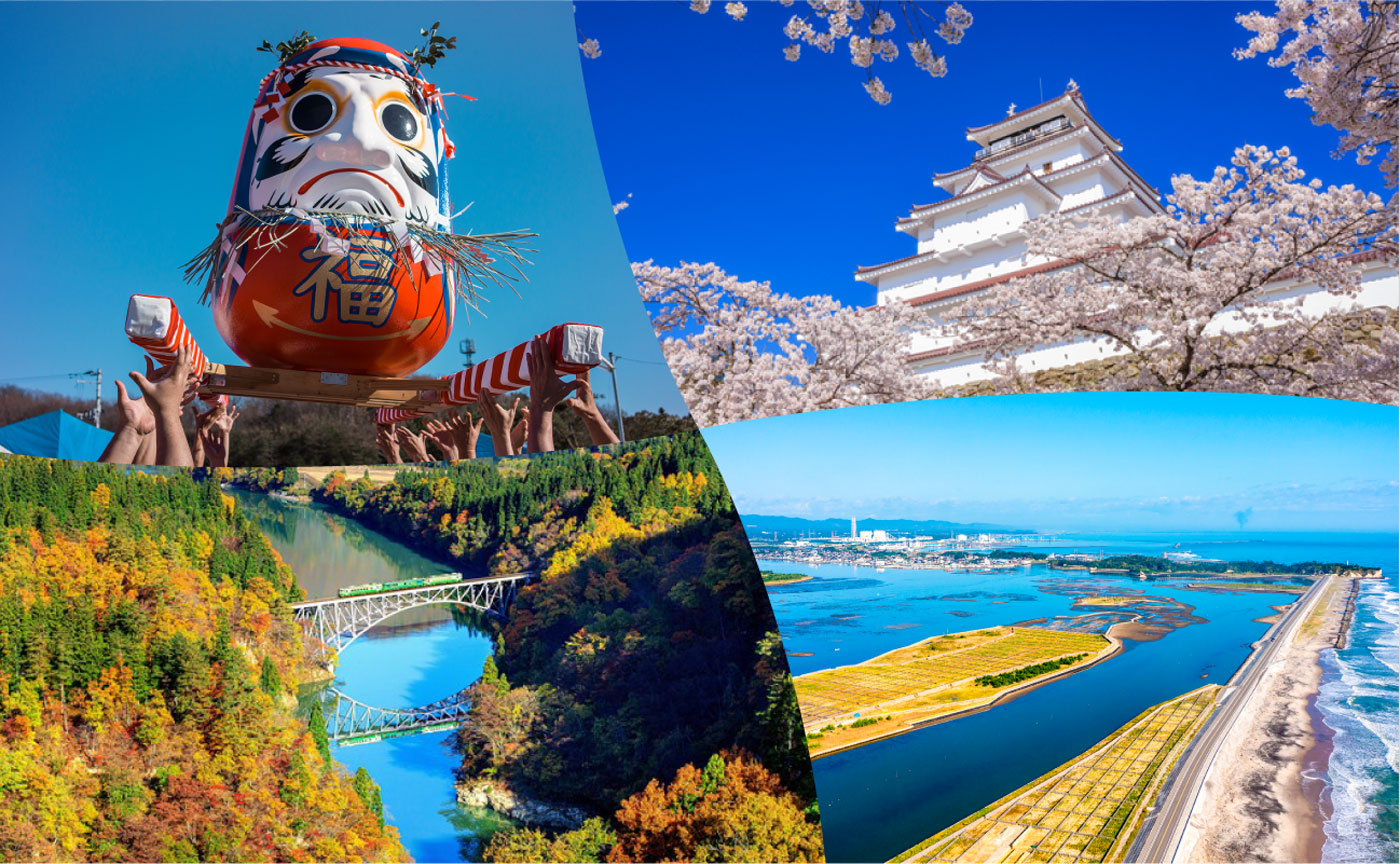1. The earthquake and accident at
TEPCO’s Fukushima Daiichi Nuclear Power Station
On March 11, 2011, a powerful 9.0-magnitude earthquake, with its epicenter at the bottom of the sea off the coast of Sanriku, triggered a tsunami of unprecedented scale that hit the coast roughly 50 minutes later and caused catastrophic damage. The death toll from the earthquake and related events rose to 19,765, while 2,553 people are still missing.
The tsunami disabled the core cooling system at three nuclear reactors (Units 1 to 3) in Tokyo Electric Power Company Holding’s (TEPCO) Fukushima Daiichi Nuclear Power Station ("Fukushima Daiichi), which was in operation when the earthquake happened and subsequently suspended. As a result, the reactors were damaged, releasing radioactive materials into the atmosphere.
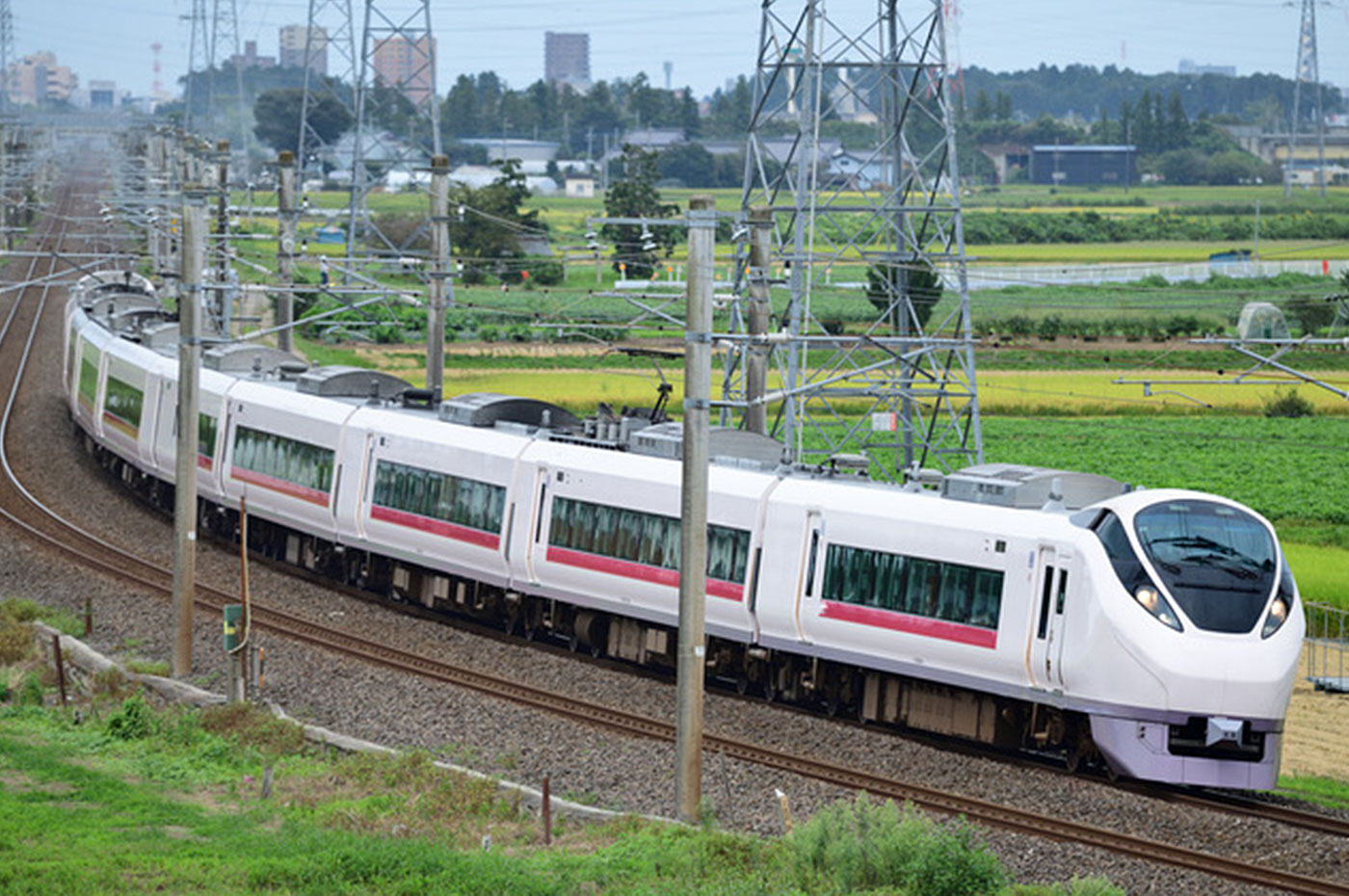
2. Progress of Reconstruction
The Government of Japan set up an evacuation zone around the power station in order to protect residents from any threats to life and health from the accident. The government lifted most of the evacuation orders in 2020 as the steady progress of decontamination efforts following the accident significantly lowered the air dose rate in Fukushima Prefecture.
As much as 99% of public infrastructure, which was hit hard by both the earthquake and tsunami, has also been restored, with the entire line of JR’s Joban Line reopened in March 2020 while Tohoku Chuo Expressway was fully connected in April 2021. Furthermore, there are ongoing projects to offer a comfortable living environment for returning residents with public housing and medical facilities being built and schools being re-established. Thanks to reconstruction efforts, the latest number of dislocated residents from Fukushima Prefecture, which was once as high as 470,000 people at its peak, has declined to 27,000 people.
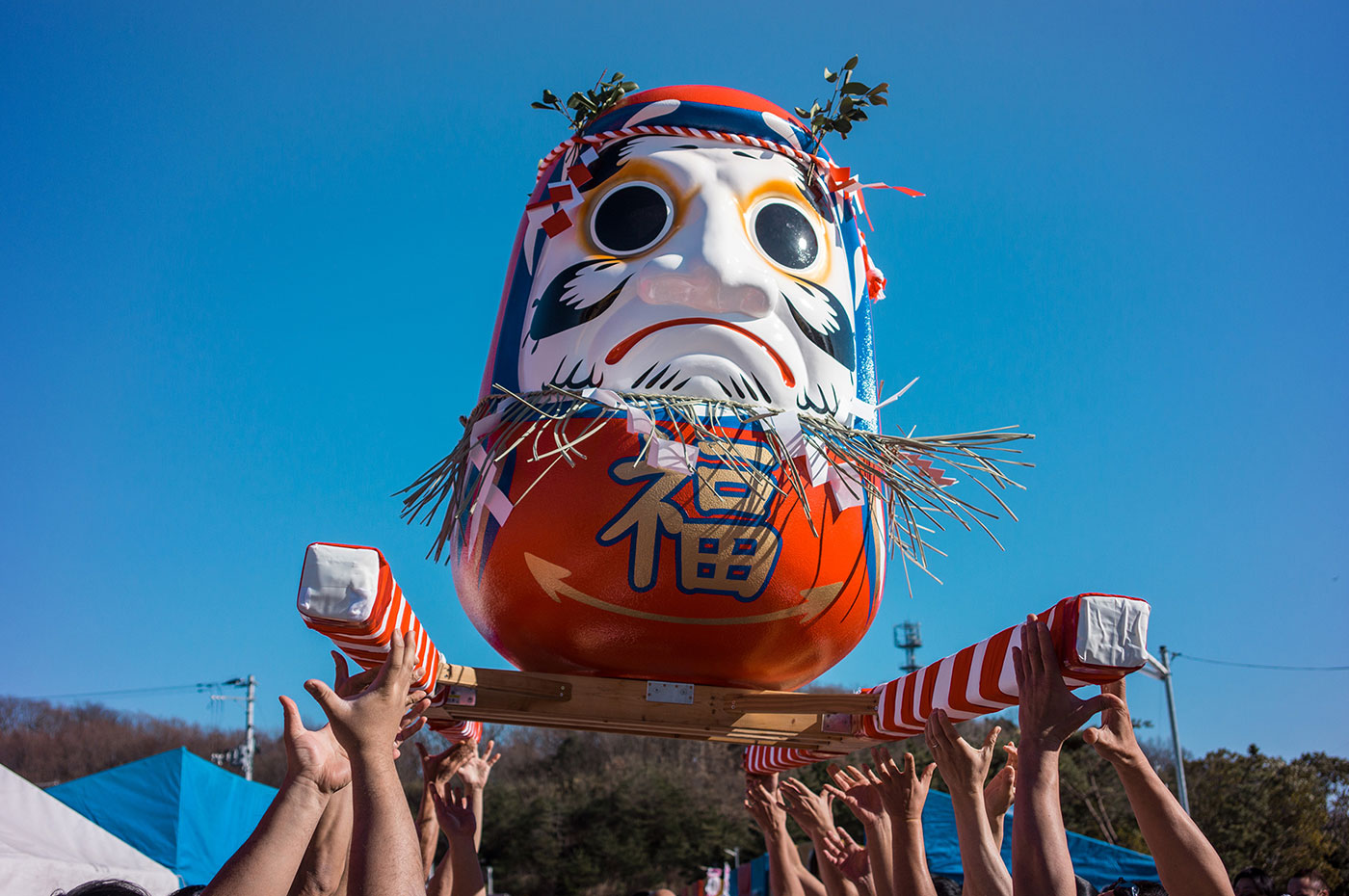
Now, signs of reconstruction are everywhere. Following the partial lifting of the evacuation order in the Futaba town in Fukushima, Futaba Daruma Market came back to its hometown for the first time in 12 years in January 2023. More than 1,000 visitors participated in the event, filling the venue with a happy atmosphere. The town never had events with this many visitors since the lifting of the evacuation order.
Futaba Daruma Market, an annual event which dates back to the Edo period over 300 years ago, exhibits a number of stalls selling Futaba Daruma as lucky charms while the shopping street in front of the Futaba Station becomes a traffic-free zone for the day.
While regular Daruma has a body with a white and a red strip with a face painted in black ink, Futaba Daruma, a specialty from the town, has a face circled by blue, which indicates the color of the ocean, and the town’s flower, a cherry blossom, as well as the town’s animal, a pheasant, are painted on both sides of the face.
The event sees its culmination when the giant Daruma, taller than any person, is tugged by two competing resident groups as a ritual to pray for a good harvest and prosperous business.
From 2012, when the entire town of Futaba was a designated evacuation zone, residents held the event in Iwaki city, where a large number of residents from Futaba had been relocated.
A voluntary residents’ group, "Yume Futaba Bito," has worked hard to keep this traditional event alive even after the earthquake.
"We are hoping for better communication between the new people moving into the town and the original residents as we have more places to work and live in Futaba town," says Mr. Nakatani, who chairs the group. "We believe Futaba Daruma Market and other festival like this will help us build our community where we understand and help each other," he added.
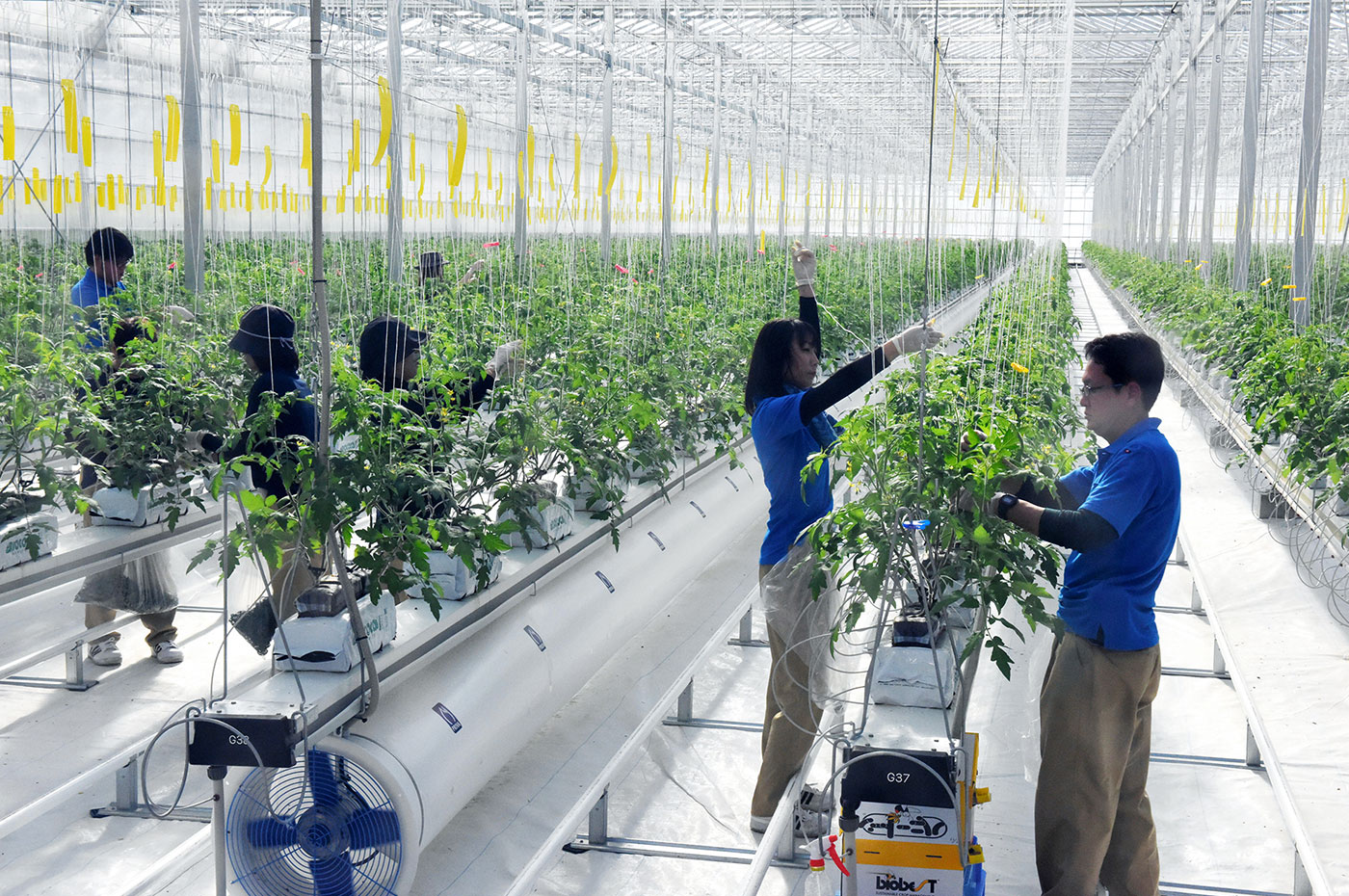
3. Plans for further reconstruction
One of the challenges of the reconstruction efforts in Fukushima is decommissioning of Fukushima Daiichi. Inside the nuclear reactors under suspension, water for cooling fuel debris comes into contact with that debris and thereby becomes contaminated with highly concentrated radioactive materials. Then, more contaminated water is generated due to mixing of this highly contaminated water with groundwater and rainwater that flows into the buildings.
The contaminated water is purified by Advanced Liquid Processing System, or ALPS, to remove any radioactive materials other than tritium to meet the safety standard. Now that Fukushima Daiichi has over 1,000 tanks to store ALPS treated water, the Government of Japan has been consulting with experts on how to handle the water for more than six years and decided to discharge it into the sea. The method has been used in Japan and elsewhere in the world and is easy to monitor, thus is regarded as a reliable means of handling such water.
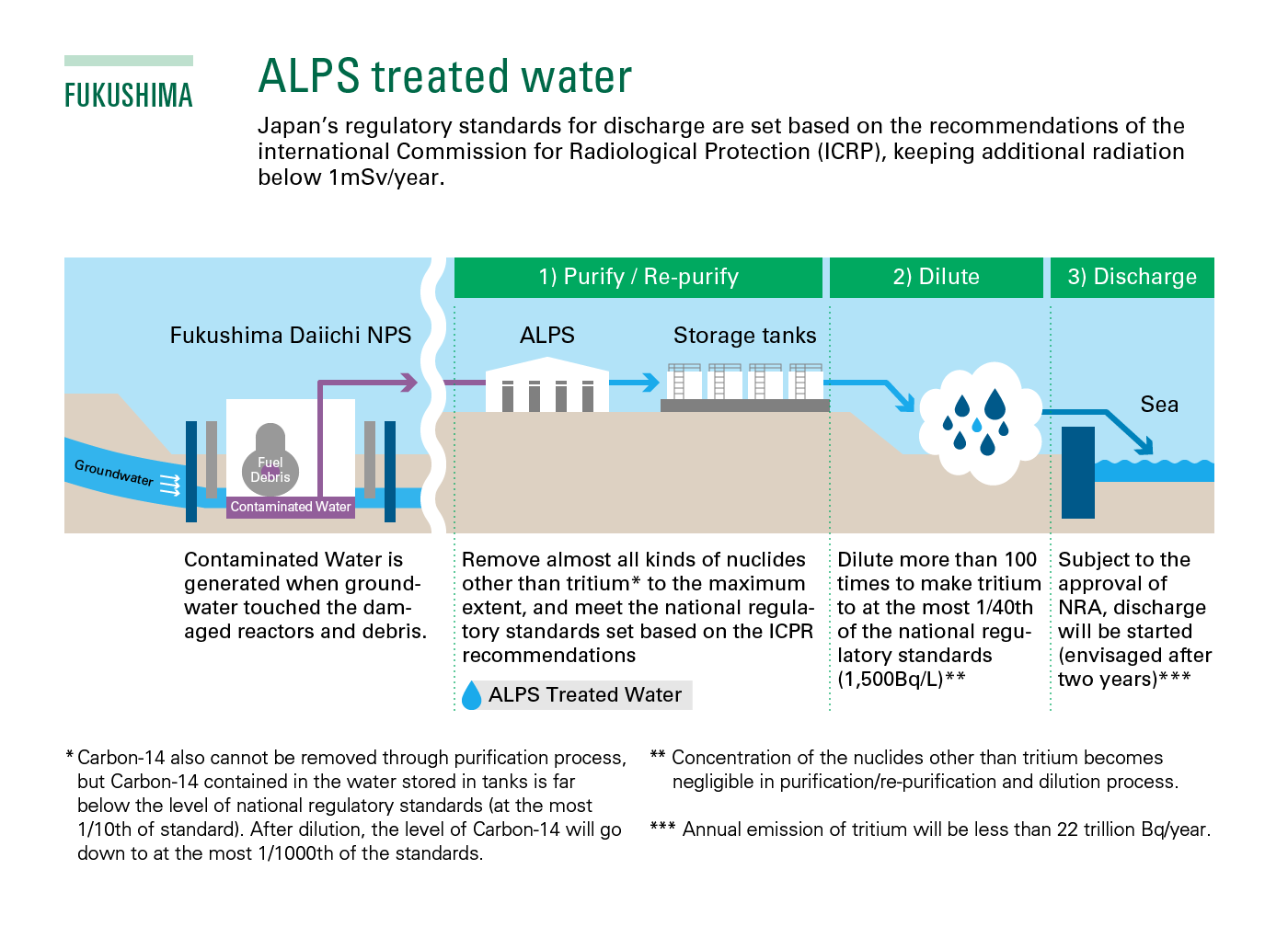
ALPS treated water contains tritium, which normally exists in human bodies and in nature in the form of rainwater, seawater and tap water. Combined with oxygen, tritium exists in a liquid form with similar characteristics as water, making it extremely difficult to separate it from water. Currently, there is no technology available to apply to ALPS treated water to remove the substance. The radiation emitted by tritium, however, has such low energy that it can be blocked with a sheet of paper. Even taken into the human body, it is not accumulated but is excreted together with water.
Before ALPS treated water is discharged into the sea, tritium will be diluted down below 1,500 becquerels per liter to meet safety standards. The level of concentration will be roughly one seventh of the World Health Organization's (WHO) Guidelines for drinking-water quality (GDWQ), which sets the level at 10,000 becquerels per liter.
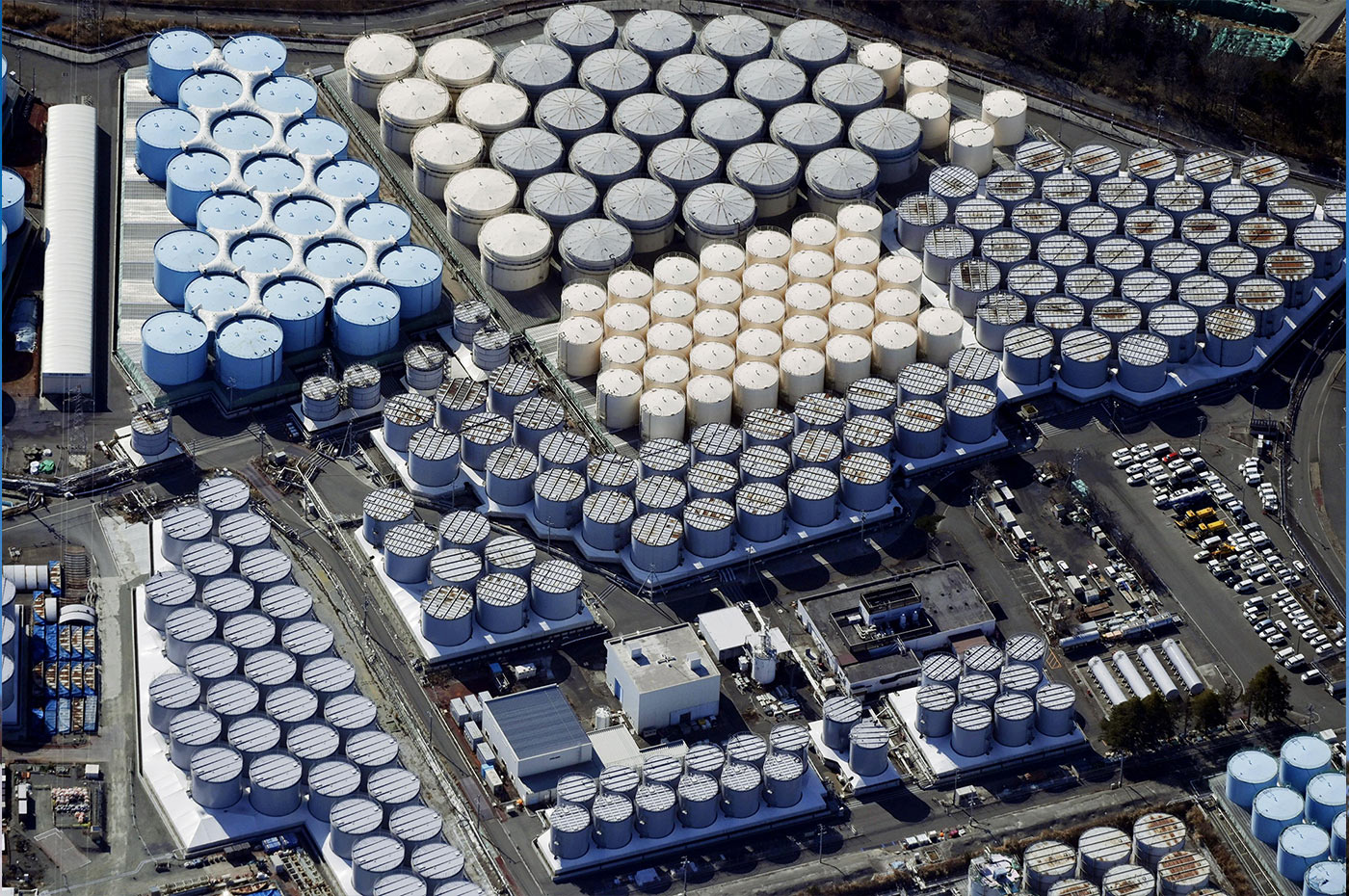
The International Atomic Energy Agency (IAEA) has confirmed that the discharge into the sea is based on scientific evidence and consistent with international practices. The agency will conduct a continuing review at the site to ensure that IAEA safety standards are being complied with. Rigorous monitoring before and after the discharge will be carried out to confirm that there is no quality issue with the seawater. In addition, new monitoring will be implemented specifically for tritium concentration in marine products, involving third party organizations including IAEA while offering opportunities for local municipal governments and fishery businesses to observe activities in a way to ensure transparency.
